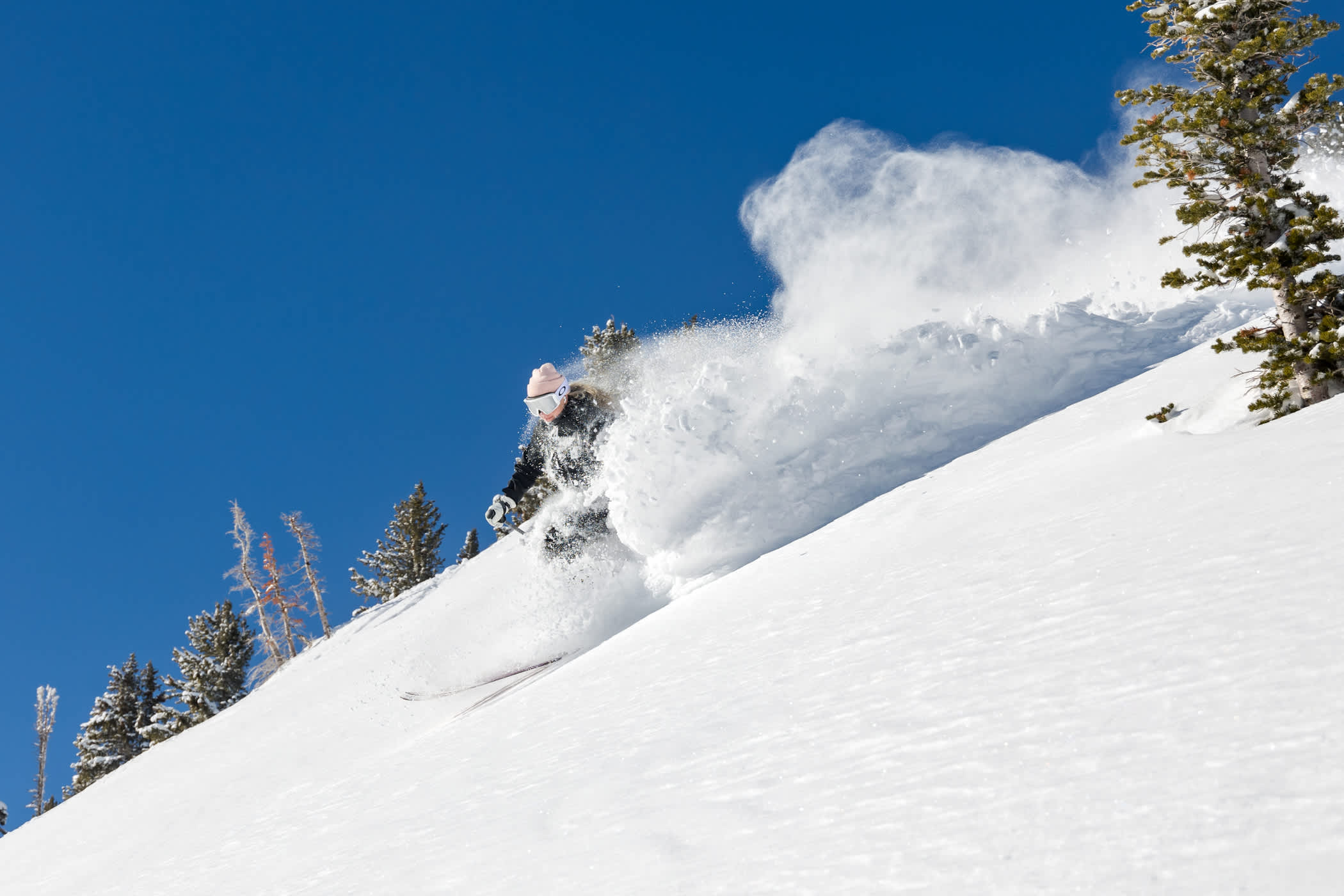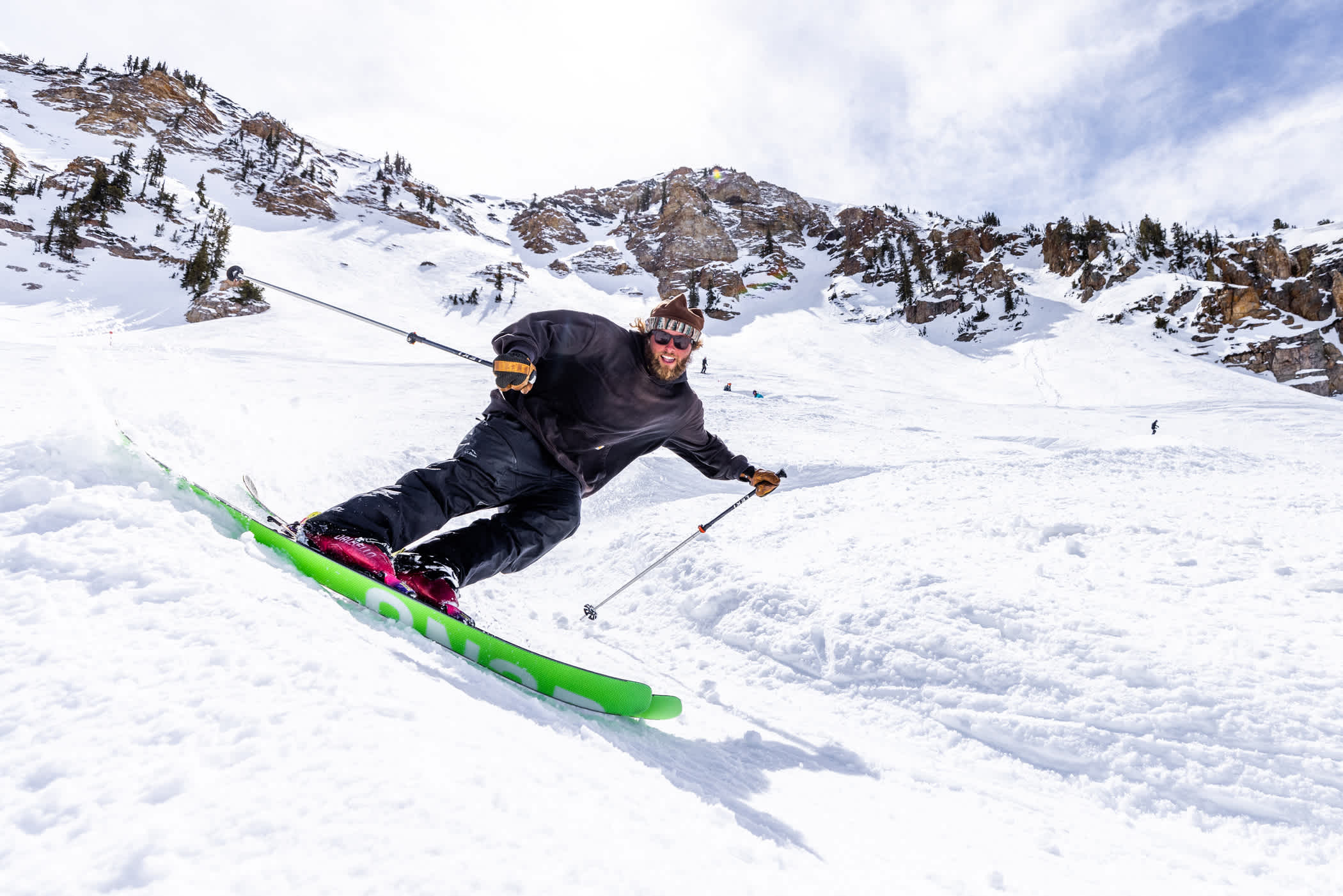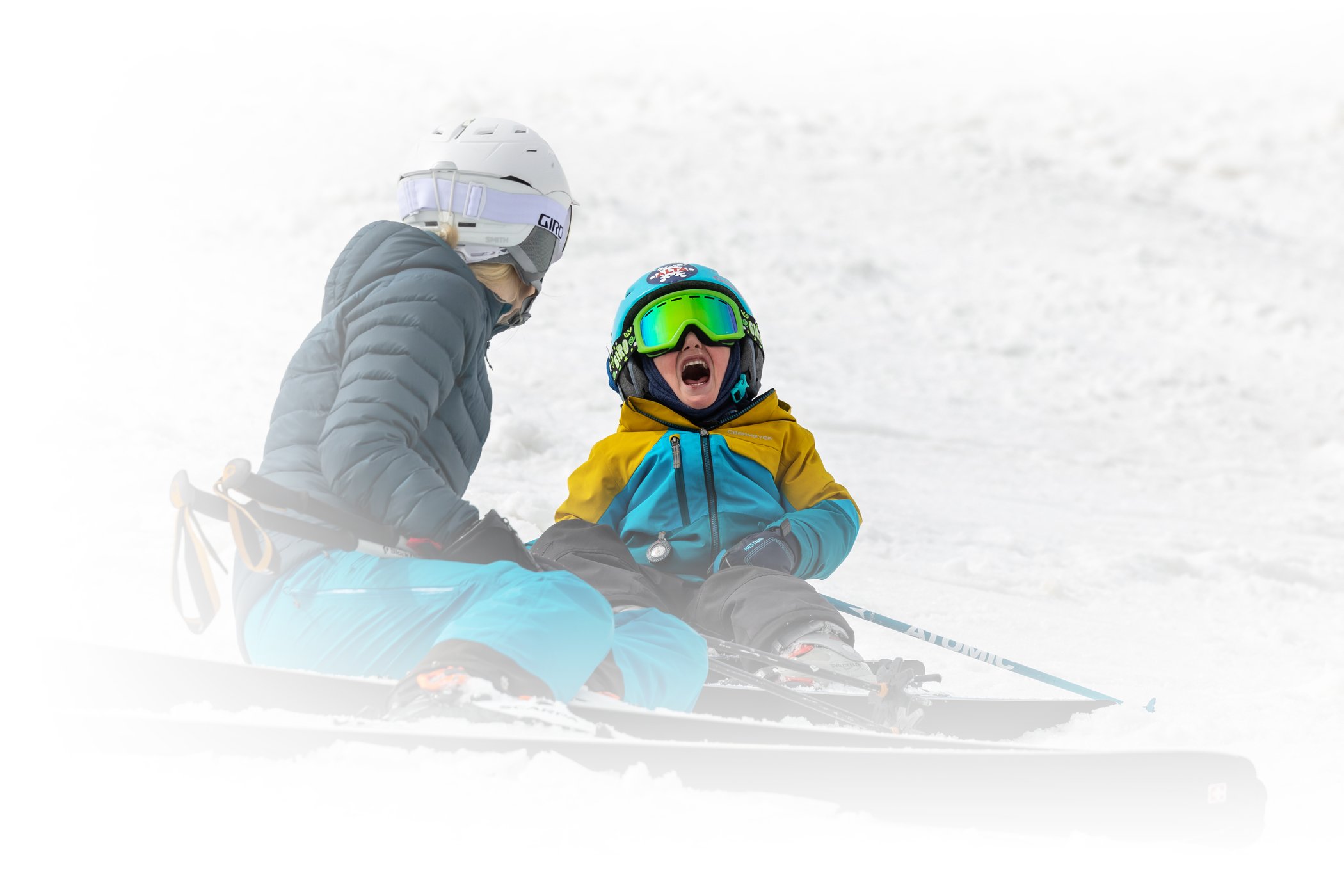A look back at the highs and lows, peaks and valleys.
That’s all she wrote, folks. The 2021-22 ski season at Alta Ski Area has drawn to a close. It wasn’t the deepest season on record. We didn’t experience a record-breaking Interlodge, but we experienced a few snowy months, some prolonged dry spells and many days that offered fresh snow and wall-to-wall terrain openings. In the end, we made it through another season without interruption from a global pandemic—and we enjoyed some pretty good skiing along the way.
The most notable change this season was the introduction of weekend & holiday parking reservations. Like any change to the status quo, the new system was met with widespread skepticism and pointed criticism. The new system required buy-in from our skiers and it was generally well-received, providing assurance that our skiers had a place to park on weekends & holidays.
Okay, now that we’ve addressed parking reservations, let's look at some pretty pictures from our Photo of the Day team and dive into a month-by-month recap of the 2021-22 season, the skiing portion of this business—the reason we are all drawn to Alta.
October 2021 | 67 inches of snow, 7.56 inches of water
Alta received its first measurable snow on October 9th and it just kept on snowing, covering the slopes of Alta by midmonth. Backcountry skiers flocked to Alta for preseason turns, hiking up and skiing down every slope in sight. It was only October, but the ski season was off to a great start a whole month before our scheduled Opening Day.
By the end of October, Alta had seen 67 inches of snow—the snowiest October at Alta since the 2004-05 season and the fourth-snowiest in the 42-year history of the Collins study plot.


October 12th (left) and October 15th (right) | Photos: Rocko Menzyk
November 2021 | 21.5 inches of snow, 2.87 inches of water
Starting in early November, temperatures warmed significantly and any thought of an early opening melted away. With over five feet of snow still blanketing the north-facing slopes of Alta, the snow stuck around in the upper mountain, however, the snowpack began to deteriorate despite significant skier compaction.
Old Man Winter finally returned the week before Thanksgiving and we were able to blow some manmade snow and fire up the lifts for Opening Day on November 27th. Despite a short dry spell, the first few weeks of the season were quite enjoyable as Alta's teams worked to open as much terrain as possible—even opening Main Chute on Mount Baldy before the end of November. Alta's high-elevation prominence and north-facing aspects provided Alta skiers over 60 runs while many other ski areas across the state sat idle, waiting for colder temps and a pattern change.
In total, just 21.5 inches of snow fell at Alta during November 2021, the second least-snowiest November on record.


Thayne Rich finds fresh snow on Opening Day (left) Taylor Johnson drops into Main Chute on November 29th | Photos: Rocko Menzyk & Iz La Motte
Deep-Cember 2021 | 143.5 inches of snow, 13.05 inches of water
As we flipped the calendar to December, the weather continued to stay dry. Things changed in a hurry. The second week of December delivered two storms of 29 inches and 42.5 inches, respectively. The storm door stayed open and the snowbanks started to stack up quickly.

December 17th: Sam Cohen bounces around Westward Ho | Photo: Rocko Menzyk
Another round of snow buried Alta in the final days of 2021. When it was all said and done, between December 8th and New Year’s Eve, Alta received 143.5 inches of snow. The combination of wind, snow and cold temperatures contributed to some incredible skiing conditions during the holiday period.

December 31st: Jake Doan celebrates the last day of Deep-Cember | Photo: Rocko Menzyk
On New Year’s Eve, a 36-inch storm cycle required avalanche mitigation on Mount Baldy. The Alta Ski Patrol shot the 105mm Howitzer and triggered a massive avalanche across the face of Mount Baldy. The snow cascaded down the mountain coming to rest 200 yards from the Collins angle station. The avalanche almost ripped to the ground, failing on snow from October’s storms, leaving behind a seven-foot crown of snow on the High Shoulder and Perla’s.
Deep-Cember 2021 was the fourth snowiest single month in the past decade at Alta Ski Area and the sixth snowiest December in the history of the Collins study plot.
January 2022 | 29.5 inches of snow, 4.77 inches of water
Shortly after the New Year, another round of dense snow and wind ushered in the start of 2022. Following a 72-inch storm cycle that contained over seven inches of water, the Alta Ski Patrol intentionally triggered another massive avalanche on East Greeley.


January 2nd: Alta Ski Patrollers inspect avalanche mitigation results on the Backside | Photos: Photo-John
Unfortunately, the snow cascading from these slides would be the most snow we saw fall all month. The early-January storm cycle moved on from Alta and high pressure settled in. After two feet of snow fell in the first week of 2022, Alta would only see another six inches of snow the rest of the month.
Alta is world-renowned for the quality—and quantity—of its snowfall. Most years, nearly 100 inches of new snow falls on the slopes of Alta during the month of January. As the ridge of high pressure stayed firmly in place, Alta's powder skiers had to make some adjustments and start searching for soft turns.

January 14th: Kendall Goodman throwing up chalk on High Boy | Photo: Rocko Menzyk
The cold temperatures, dense snow and short days created some of the best wind buff and chalk skiing in recent memory. The off-piste skiing magically transformed into edge-able chalk snow. Alf’s High Rustler—the iconic slope above the Wildcat base area—looked, and skied, as if it had been groomed by the snow gods.
With just 29.5 inches of snow falling in January 2022, it was the least-snowiest January in the 42-year history of the Collins study plot. A small silver lining can be found in the water weight of the snow, as 4.77 inches of water registered as just the 9th-driest January on record.

January 31st: Erin Schiano, chalk artist | Photo: Chloe Jimenez
February 2022 | 26 inches of snow, 1.84 inches of water
October was snowy, November was bone dry, December was stormy and January was dry. It was only fitting that February would deliver bountiful snowfall. It did not. The ridge of high pressure remained in place for the first two weeks of February—a month that typically sees 90 inches of snowfall.

February 9th: Luke Miele enjoying some wind buff on West Rustler | Photo: Rocko Menzyk
Just as it seems the month-and-a-half chalk cycle would continue straight into spring, the snow started to fall. It wasn’t the massive February storms that have shut down the mountain the past two winters, but it was enough to soften up the mountain and remind Alta skiers why we call this place home.
In total, February saw just 26 inches of snow from 1.84 inches of water, the driest and least-snowiest February at Alta in the past 42 years.

February 17th: Jonah Williams dives into the first powder day in (what seemed like) forever | Photo: Rocko Menzyk
March 2022 | 83 inches of snow, 5.99 inches of water
March brought the long-anticipated return of powder skiing to Alta. We saw fresh snow on 15 days in March, including the biggest single storm of the 2021-22 season, a 49.5-inch storm in early March. Between March 3rd and March 20th, Alta received 72.5 inches of new snow.


March 9th & 14th: Erika Klenk (left) and Maude Raymond (right) enjoy the deepest storm cycle of the season | Photos: Rocko Menzyk & Photo-John
It finally started to feel like winter as we entered the first day of spring. It wouldn’t last forever as temperatures spiked and we were once again enjoying some very warm spring skiing conditions. Luckily, the return to spring skiing wouldn’t last nearly as long as we experienced in January and February. A moist spring storm ended the month with 9.5 inches of creamy powder.
March 2022 delivered 83 inches of new snow, not the Miracle March we have seen in years past, but much closer to the 41-year average of 93.87 inches and exceeding the 10-year average of 75.9 inches.


March 7th & 25th: Typical spring skiing at Alta, fresh powder and Ballroom wiggles | Photos: Iz La Motte (left) & Rocko Menzyk (right)
April 2022 | 75 inches of snow, 7.54 inches of water
As we entered April, we knew we would need a little help from Mother Nature to stay open and stay skiing through our First Closing Day and the Bonus Closing Weekend. As we were entering the final week of daily operations, a cold winter storm delivered a 23-inch storm. Our first closing day on Easter Sunday, April 17th, produced a powder morning, followed by mild and sunny weather as Alta skiers gathered to celebrate the first closing day of another great ski season.

April 17th: Reed Snyderman, dressed in his Easter Sunday best | Photo: Photo-John
Some called Saturday, April 23rd the "best day of the season." We chalk that up to recency bias, but nevertheless, the skiing was incredible and it served as the perfect reminder of the winters we have grown accustomed to at Alta.
Alta saw 76 inches of snow in April—98% of the 41-year average for the month and 113% of normal over the past decade. The 7.54 inches of water in April will help prolong our snowpack and should provide a slight boost to our depleted lakes and reservoirs.

April 24th: Mother Nature saved one last bluebird powder day for Closing Day | Photo: Photo-John
2021-22 by-the-numbers
Seasonal Snowfall
- 2021-22 Seasonal Snowfall = 445.5 inches
- 2020-21 = 486.5"
- 2019-20 = 542”
- 2018-19 = 626”
- 82.5% of Alta's 41-Year Average Snowfall of 540 inches
- 2020-21 = 88.9% of average
- 2019-20 = 99.1% of average
- 2018-19 = 114.4% of average
- 95.4% of Alta's rolling 10-Year Average Snowfall of 467 inches
- 2020-21 = 99.1% of average
- 2019-20 = 110% of average
- 2018-19 = 127.4% of average
October and December saw a lot of snow. November, January and February were historically bad. March and April were fairly average for Alta. When it was all said and done, this roller coaster of a season delivered 445.5 inches of snow from 43.62 inches of water for an average density of 9.79%—the second-highest average density of any season in the 42-year history of the Collins study plot (1981-82 season: 9.82%). Snowfall totals were 82.5% of Alta's 41-year average, but water content of 43.62 inches was only slightly below Alta's 41-year average of 44.83 inches (97.3%). When it snowed, it was dense.
The season looks a little better when compared to Alta's rolling 10-year averages. This season's 445.5 inches of snowfall is less than 5% off from the 10-year rolling average of 467 inches. This season's water content actually outperformed the 10-year rolling average of 40.38 inches (108%). The 9.79% density of the average snowfall was 13% denser than average over the past decade.
Peaks
- October 2021 | 67" snow, 7.56" water
- 264% of average October snowfall and 262% of average October water
- 4th-snowiest October since 1980—the start of Collins study plot
- Snowiest December since 2004 (122")
- 3rd-wettest October since 1980—the start of Collins study plot
- Wettest December since 2004 (14.85")
- December 2021 | 143.5" snow, 13.05" water
- 164% of average December snowfall and 188% of December water
- 6th-snowiest December since 1980—the start of Collins study plot
- Snowiest December since 2007 (147")
- 6th-wettest December since 1980—the start of Collins study plot
- Wettest December since 2010 (14.82")
December and October were well above average in terms of both snow and water. These two months helped create a snowpack that carried us into spring.
Valleys
- November 2021 | 21.5" snow, 2.87" water
- Tied for the 2nd-least-snowiest November since 1980—the start of Collins study plot
- Least-snowiest November since 2009 (21.0")
- Fifth-least-snowiest November since 1980—the start of Collins study plot
- Driest November since 2013 (2.43")
- January 2022 | 29.5" snow, 4.77" water
- Least-snowiest January since 1980—the start of Collins study plot
- February 2022 | 26" snow, 1.84" water
- Least-snowiest February since 1980—the start of Collins study plot
- Driest February since 1980—the start of Collins study plot
January and February were historically dry. We received a total of 55.5 inches of snow compared to a 42-year average of 182.5 inches—30% of average, That's 70% less snow than we would normally see during two of the busiest months of the ski season. The new snow carried 6.61 inches of water compared to an average of 14.53 inches—55% of our 42-year average.
2021–22 POWDER SKIING PROBABILITIES
- 153 total ski days during the 2021-22 season
- 2020–21: 150 total ski days
- 2019–20: 107 total ski days (COVID-19 closure)
- 2018–19: 153 total ski days
- 59 days delivered 1 inch or more of new snow = 38.5% of all ski days
- 2020–21: 66 days = 44%
- 2019–20: 54 days = 50.5%
- 2018–19: 80 days = 52.3%
- 36 days delivered 3 inches or more of new snow = 23.5%
- 2020–21: 41 days = 27.3%
- 2019–20: 41 days = 38.3%
- 2018–19: 53 days = 34.6%
- 24 days delivered 6 inches or more of new snow = 15.7%
- 2020–21: 24 days = 16%
- 2019–20: 23 days = 21.5%
- 2018–19: 41 days = 26.8%
- 13 days delivered 10 inches or more of new snow = 8.5%
- 2020–21: 13 days = 8.7%
- 2019–20: 12 days = 11.2%
- 2018–19: 21 days = 13.7%
- 1 day delivered 20 inches or more of new snow = 0.7%
- 2020–21: 2 days = 1.3%
- 2019–20: 2 days = 1.9%
- 2018–19: 7 days = 4.5%
We stayed open and stayed skiing. If it seemed like powder days were less frequent than usual, it's because they were. Compared to the past few seasons at Alta, we saw fewer days with an inch or more to soften up some turns. We also experienced fewer deep powder days.
A whopping 41% of in-season snowfall (Opening Day to Closing Day) fell during the month of December. On average, we received 4.6 inches per day in December. The rest of the season saw an average daily snowfall of just 1.7 inches.
2021–22 Takeaways
While we can find silver linings when comparing this season to the past decade at Alta, there's no denying that we are witnessing a downward trend in our snowfall totals and the amount of water in our snowpack. This season's October snow and November dry spell led to the massive avalanche cycle in late December and early January. The historically prolonged drought in the middle of winter threatened to cut our ski season short. The recent 60-Hour and 52-Hour Interlodge events of February 2021 and February 2000 demonstrate the power of unusual weather events. Each of these abnormalities is evidence of a changing climate.
Starting this season, Alta Environmental Center will match 100% of its annual electricity use with renewable energy through the purchase of renewable energy credits (RECs). With this new commitment, Alta Ski Area will reduce its carbon footprint by an estimated 3,567 metric tons of carbon dioxide per year. Electricity use makes up more than 50% of the ski area’s annual greenhouse gas emissions.
As a business that relies on snow, Alta Ski Area recognizes the impact of climate change. Reducing our greenhouse gas emissions aligns with the ski area’s mission statement to provide authentic skiing experiences within a natural mountain environment. In order to continue fostering the Alta experience for future generations, the ski area is committed to conserving and protecting the natural mountain environment in which we operate.
We were able to stay open for 153 ski days. We were able to navigate another season during a global pandemic. We successfully implemented a new parking reservation system that dramatically improved the weekend & holiday skiing experience. And we enjoyed plenty of time in the sun with friends and family. We didn't revel in as many powder days as we would have liked, but, like always, Alta's high-elevation, north-facing slopes provided some incredible skiing.
2020–21 Season Recap | A Different Season >
2019–20 Season Recap | A Deep Dive into Uncharted Snowbanks >



Add Your Comment